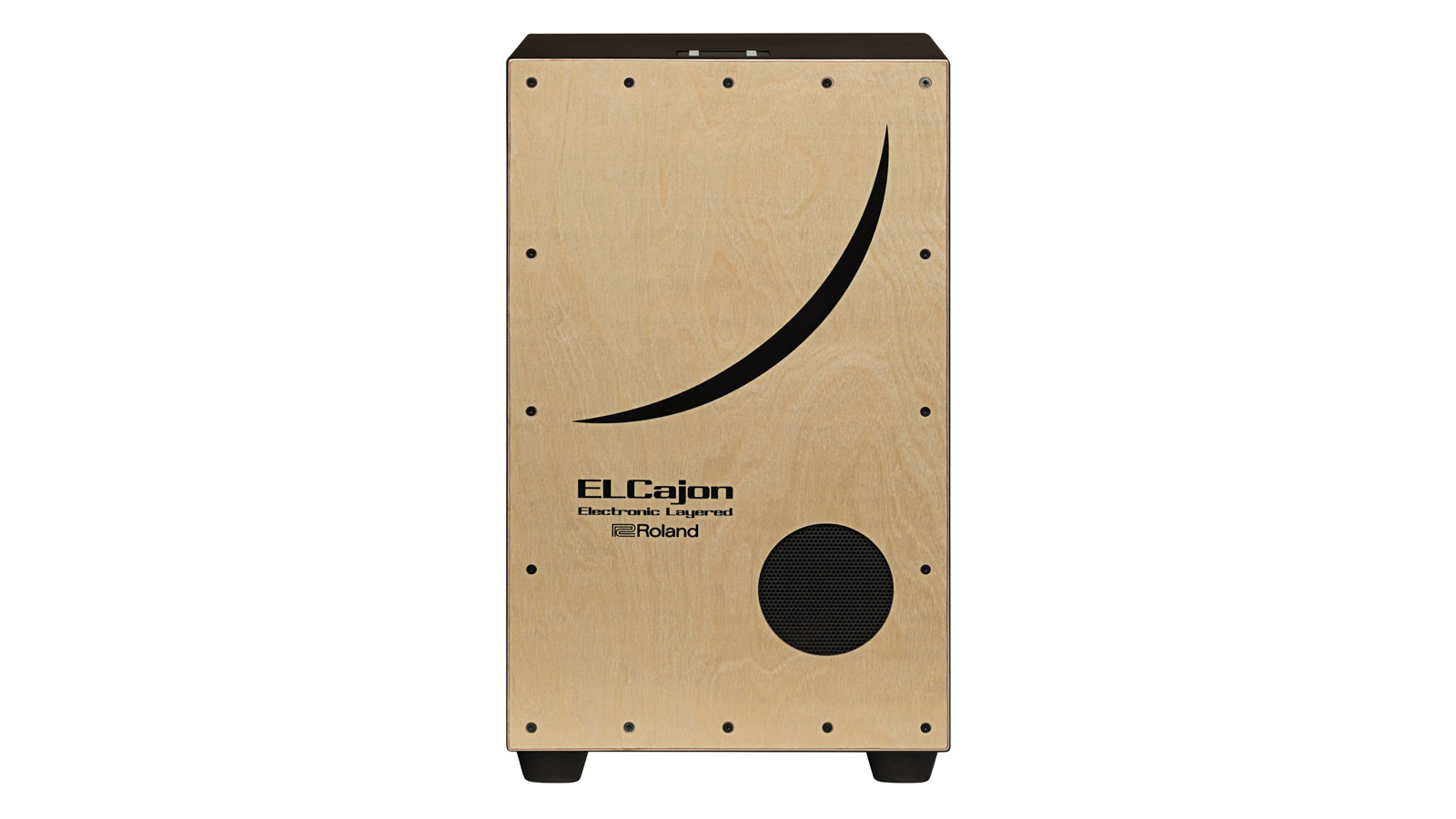NAMM 2016: Roland introduces EC-10 El Cajon
On-the-go percussion instrument gets electronic treatment
NAMM 2016: Rivaling the ukelele in its meteoric commercial rise and deceptive accessibility, the cajon has risen to market prominence in the last few years. Now Roland are applying their battle-tested electronic percussion tech to the instrument and the results are intriguing, to say the least.
Built on a fully usable acoustic cajon, the EC-10's battery-powered electronics are designed to complement its natural acoustics, triggering a 30 kits ranging from traditonal sounds like tambourine to more adventurous electronic banks.
The EC-10 is available now at a GB RRP of £309, and we'll be bringing you a full review in the very near future.

PRESS RELEASE: Roland is proud to announce the EC-10 EL Cajon, a unique and versatile hybrid percussion instrument. Combining an authentic acoustic cajon with Roland's famous electronic percussion technology, the EC-10 allows cajon players to easily enhance their music with layered electronic sounds. Completely self-contained with battery power and onboard amplification, the EC-10 puts the dynamic world of hybrid percussion in the hands of every cajon enthusiast.
The cajon has become an extremely popular instrument for on-the-go percussion, from local jams and street busking to nightclub performances and beyond. With its built-in Roland sound module, the EC-10 seamlessly extends the cajon's organic capabilities, letting performers create a wide variety of dynamic percussion sounds from one portable instrument.
At its core, the EC-10 is a real acoustic cajon that sounds great even with its onboard electronics turned off. The integrated Roland sound module features 30 kits loaded with sounds specially developed to complement the EC-10's natural cajon voice. Included is everything from traditional percussion like tambourine, djembe, and shaker to acoustic snare, electronic drums, and sound effects. Studio-optimized cajon sounds are also on hand to enhance the acoustic sound for more depth and punch. Thanks to the EC-10's dual sensors, each kit allows users to trigger independent sounds from the head and edge of the playing surface.
The top-mounted sound controls on the EC-10 are designed for quick access while performing, with dedicated buttons for scrolling through sound categories and variations.
Want all the hottest music and gear news, reviews, deals, features and more, direct to your inbox? Sign up here.
Rear-panel controls include a Volume knob for mixing in the layered sound and a Trigger Balance knob to adjust the blend of the head and edge sounds. The user can also adjust the overall trigger sensitivity for their personal playing touch.
While the EC-10 contains high-tech electronics, it fully retains the self-contained simplicity that's made the cajon so popular. The integrated amp and coaxial speaker provide high-quality sound for keeping up with acoustic guitar amps and other instruments, and six AA batteries deliver up to 12 hours of power for long jams in any location. There's also a handy Mix In jack for playing music from a smartphone or song player at home or on the gig. The EC-10 even functions as an extra seat in a music room or family space when not being played.
GB RRP: £309
MusicRadar is the number one website for music-makers of all kinds, be they guitarists, drummers, keyboard players, DJs or producers...
- GEAR: We help musicians find the best gear with top-ranking gear round-ups and high-quality, authoritative reviews by a wide team of highly experienced experts.
- TIPS: We also provide tuition, from bite-sized tips to advanced work-outs and guidance from recognised musicians and stars.
- STARS: We talk to musicians and stars about their creative processes, and the nuts and bolts of their gear and technique. We give fans an insight into the craft of music-making that no other music website can.
